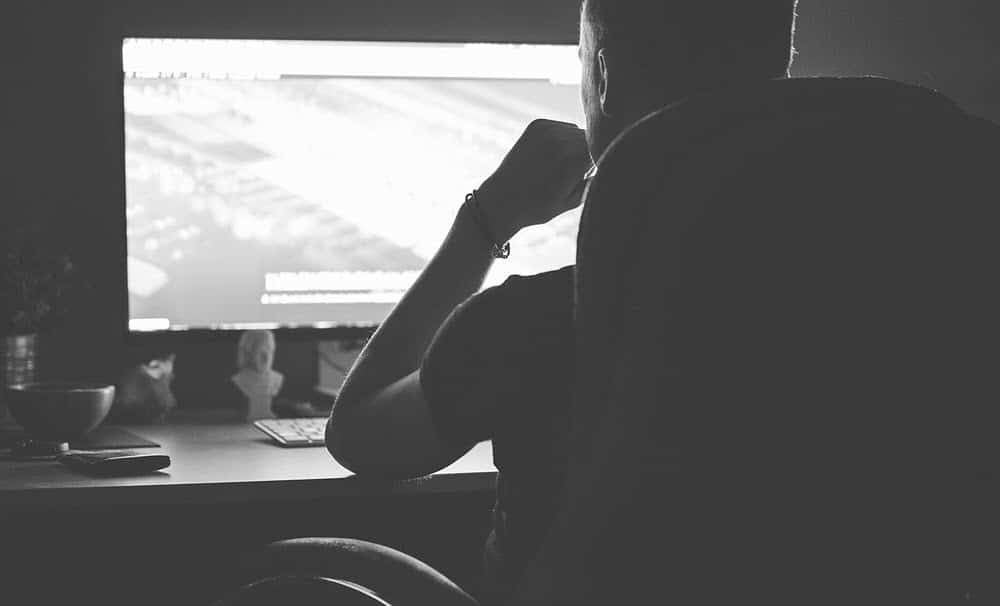Are your graphic designers, artists, copywriters, or other creatives struggling to generate truly innovative ideas or even to meet deadlines?
Do these employees complain about frequent headaches, burnout, or afternoon slumps?
Believe it or not, these problems may be directly related to the lighting in your office space. In this post, we’ll look at how fluorescent lighting can hinder your employees’ (or your) creative process, and how making a simple change to more natural lighting can help. Then we’ll introduce a simple, cost-effective way to provide that natural lighting without breaking the bank.
Lighting: a key component to your work environment
 It’s no surprise that most office spaces are artificially lit with fluorescent lighting. According to psychology professor Sir Cary Cooper, “alarmingly, nearly 50 percent of workers have no natural light.”
It’s no surprise that most office spaces are artificially lit with fluorescent lighting. According to psychology professor Sir Cary Cooper, “alarmingly, nearly 50 percent of workers have no natural light.”
According to Wisegeek, the reasons behind this are simple, and boil down to cost-effectiveness.
Fluorescent lighting is 66 percent cheaper than regular lighting, while providing the same brightness. As well, fluorescent bulbs, on average, last six times longer than incandescent bulbs.
Fluorescents don’t give off heat, making them ideal for office spaces where extra heat could cause equipment problems and discomfort for workers.
Unfortunately, this cost-effectiveness and convenience comes may be sacrificing your employees’ well-being, productivity, and creativity. Professor Cooper’s study found that when office lighting is more natural,
- Employees report a 15 percent higher level of well-being,
- They tend to be at least six percent more effective,
- And creativity is boosted by as much as 15 percent or more overall.
How to solve these problems? Increase natural lighting!
The best way to circumvent problems associated with artificial lighting and spur both productivity and the creative process is to increase the amount of natural lighting. Having more natural lighting during the workday offer a number of benefits.
Improved our office!
We enjoyed working with Make Great Light to improve the lighting in our office. Fluorescent lighting that was already installed was adding to eye strain and headaches. Often we turned lights off to avoid the glare. Now we have a well-lit office AND no eye-strain or headaches. Thank you!
– Candice Bolton, 2016
Natural lighting and your sleep cycles
 When you’re regularly exposed to natural lighting during the day, it improves your circadian rhythm, making you better rested. In fact, one study cited by CNN found that employees with windows that admit sunlight got an average of 46 more minutes of sleep each night. Those without windows had more sleep disturbances during the night.
When you’re regularly exposed to natural lighting during the day, it improves your circadian rhythm, making you better rested. In fact, one study cited by CNN found that employees with windows that admit sunlight got an average of 46 more minutes of sleep each night. Those without windows had more sleep disturbances during the night.
A more alert worker
 Not only are you better rested when you’re regularly exposed to natural lighting; you tend to be more alert and focused, too. A study conducted in 2012 and published in Behavioral Neuroscience found that people exposed to daylight for six hours two days in a row felt more alert and performed their tasks more accurately than those who just had artificial light.
Not only are you better rested when you’re regularly exposed to natural lighting; you tend to be more alert and focused, too. A study conducted in 2012 and published in Behavioral Neuroscience found that people exposed to daylight for six hours two days in a row felt more alert and performed their tasks more accurately than those who just had artificial light.
This is because your lighting exposure during the day affects how sleepy you are and how sharp your mind is, no matter how much sleep you got the night before. If you can’t sit by a window, which most of us can’t, then using lighting that mimics daylight can help keep you alert.
I can see clearly now
 More natural lighting can actually improve your visual acuity, according to a study by Berman et al. In fact, of the subjects studied, 24 of 27 showed significantly better visual acuity with lighting that was closer to natural levels.
More natural lighting can actually improve your visual acuity, according to a study by Berman et al. In fact, of the subjects studied, 24 of 27 showed significantly better visual acuity with lighting that was closer to natural levels.
What does this mean? Put simply, it means they could see clearer and in more detail. If you think about the typical Snellen eye chart from your optometrist, imagine being able to read an extra line or two of letters just because the lighting was more natural!
Increased color perception
 Another benefit of natural lighting is that it enables you identify colors more accurately. The color temperature of sunlight changes dramatically throughout the day, moving from 2,000K at dawn to 5,500K at noon. Then it drops again. Here’s an outline of common color temperatures and what they equate to in terms of natural lighting:
Another benefit of natural lighting is that it enables you identify colors more accurately. The color temperature of sunlight changes dramatically throughout the day, moving from 2,000K at dawn to 5,500K at noon. Then it drops again. Here’s an outline of common color temperatures and what they equate to in terms of natural lighting:
- 2,000K – Sunlight at sunrise or sunset under clear skies
- 3,500K – Direct sunlight an hour after sunrise
- 4,300K – Morning or afternoon direct sunlight
- 5,500K – Noon sunlight in the summer.
To most accurately tell one color from another, you need neutral lighting of around 5,500K. Otherwise, it’s like trying to match colors while wearing red or orange sunglasses.
Cut down on the glare
The next step in using lighting to improve working conditions is to cut down on glare. Glare from overhead lights can cause a lot of problems – not only for your creative, but for the rest of your employees, too.
Migraines and headaches galore
 About 18 million Americans suffer from migraine headaches. For many of these individuals, sensitivity to the flickering and high levels of blue commonly found in fluorescent lighting tends to be a major trigger of their migraines.
About 18 million Americans suffer from migraine headaches. For many of these individuals, sensitivity to the flickering and high levels of blue commonly found in fluorescent lighting tends to be a major trigger of their migraines.
Making matters worse, the over-illumination of fluorescent lighting causes glare, which is another common cause of headaches and migraines. Too much lighting can cause eye strain, which leads to visual fatigue, which in turn leads to headaches and migraines. These, understandably, can severely hinder someone’s creative potential.
Computer Vision Syndrome and your workers
Spending time in front of a computer screen makes it even worse. Not only does the glare of lighting off the screen lead to headaches and migraines; it also causes something now known as Computer Vision Syndrome (CVS). Here are the symptoms of CVS, according to WebMD:
- Blurred vision
- Double vision
- Dry or red eyes
- Heavy eye irritation
- Recurring headaches
- Back, shoulder, or neck pain
- Tearing or watery eyes.
Doesn’t sound like much fun, does it? It’s not – and it’s likely resulting in reduced productivity and increased sick time among your creatives. On top of that, imagine trying to remain creative and innovative while your head is pounding and throbbing. It just doesn’t work.
Okay, so what do I do?
The good news is that you don’t have to put in brand-new lighting to overcome the ill effects of artificial fluorescents. Using inexpensive natural light filters, you can quickly, easily, and cost-effectively solve the lighting problem throughout your office.
These natural color filters are less expensive than switching to full-spectrum light bulbs, and still provide all the benefits of natural sunlight, without the damaging and painful ultraviolet radiation. The end result will be a lighting source that will spur the creative process, rather than hinder it.
